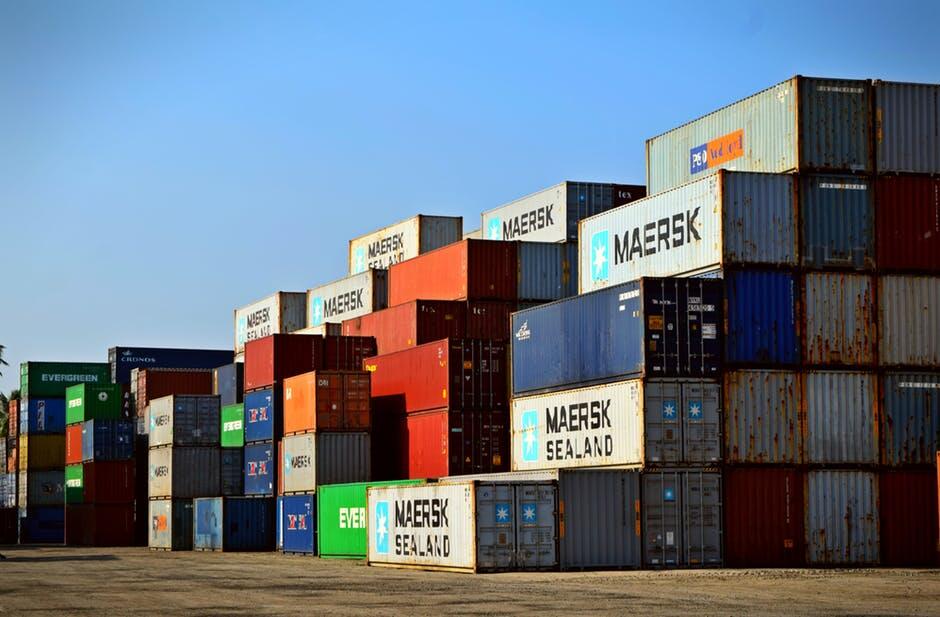Shipping containers are essential for businesses involved in logistics, transportation, and storage. Did you know that knowing shipping container sizes can boost your company’s efficiency?
If you need to move goods nationwide or store items, knowing the right shipping container sizes helps you use space well. This can also save you money in the long run. In fact, choosing the right size can lead to better organization and improved workflow, ultimately helping you achieve optimal business outcomes.
Why Container Dimensions Matter
Shipping container dimensions are not just numbers; they directly affect how well your business can operate. Each container comes in different sizes, and choosing the right one can help you maximize your space, save on shipping costs, and improve overall efficiency.
For example, the standard 20-foot unit has an interior width of about 7.7 feet and a height of 7.9 feet, providing around 1,170 cubic feet of storage space. On the other hand, a 40-foot container doubles this volume, offering just over 2,390 cubic feet.
Knowing these measurements helps you pick a container that fits your needs. This way, you don’t waste space or resources.
Common Shipping Container Sizes
Most companies use a few standard sizes of shipping containers. Here are four types of shipping containers commonly used in international cargo transportation.
The smallest is the 20-Foot Container, which measures 20 feet long, 8 feet wide, and 8 feet tall. This container is ideal for smaller shipments or for transporting heavy machinery.
Next in size is the 40-Foot Container, which is 40 feet long, 8 feet wide, and 8 feet tall. Its larger capacity makes it a popular choice for shipping bulkier cargo, such as furniture or construction materials.
For even more space, the 40-Foot High Cube Container offers an additional foot of height, making it 9 feet tall. This extra room is especially useful for shipping tall or oversized items, like refrigerators or large machinery.
The largest of the four is the 45-Foot High Cube Container. Measuring 45 feet long, 8 feet wide, and 9 feet tall, it provides maximum storage capacity for shipping large quantities of goods.
Factors to Consider When Choosing a Container Size
When selecting a container size, consider the weight of your cargo. Heavier items, like machinery, may require a smaller container to prevent overloading.
Type of Goods
The type and quantity of goods you plan to store or ship will influence which container size is best for you. For instance, fragile items may require more careful packing, while bulk goods may fit more efficiently in a larger container.
Loading and Unloading
Consider how easily you can load and unload from the container. If your business frequently moves cargo in and out, a container with wider doors might be more suitable.
Transportation Costs
Larger containers might seem appealing, but remember that they can also increase transportation costs. Make sure to analyze both the price of the container and the cost of shipping.
Space Efficiency with Containers
Maximizing space efficiency plays a crucial role in maintaining an optimal business. When containers are packed correctly, businesses can significantly reduce handling and transportation costs. Here are practical tips for enhancing space efficiency:
Optimize Packaging
Make the most of your storage space by using the right packing materials. Compact and sturdy materials not only save space but also protect your items from damage.
For instance, consider using reusable containers or bags made of durable materials like nylon or polyester. These can be easily cleaned and reused, reducing waste and saving you money in the long run.
Stack Containers
Maximize your storage area by stacking your containers wisely. Imagine a game of Tetris – you want to fit the pieces together perfectly to minimize empty gaps. This not only saves space but also makes it easier to find what you need quickly.
For example, you can stack smaller containers on top of larger ones, or use vertical shelving units to keep your containers organized. Just be sure to label each container so you can easily identify what’s inside.
Regular Audits
Regular inventory checks are crucial to maintaining a well-organized storage area. Set aside some time each week or month to physically count and inspect your stock. This helps to identify and eliminate wasted space, keeping your packing organized and efficient.
Think of it like spring cleaning – you’re getting rid of the unnecessary and making room for what’s important. By doing so, you’ll also reduce the risk of damaged or lost items, saving you time and money in the long run.
Real-World Applications of Shipping Containers
Shipping containers are versatile tools that can serve various business needs across numerous industries. Some practical uses include:
Retail
Imagine walking through a trendy neighborhood. You find a boutique shop that catches your eye. Instead of a usual storefront, it’s made from a sleek, repurposed shipping container. Mobile pop-up shops created from containers offer a unique shopping experience, allowing retailers to showcase their products in a one-of-a-kind setting.
For example, at music festivals, a clothing brand can create a container shop. This shop would attract festival-goers with its bold and eye-catching design. This innovative approach can help retailers connect with customers in a more engaging way, increasing brand loyalty and driving sales.
Food and Beverage
In response to the growing demand for mobile dining in urban areas, restaurants are turning to shipping containers as kitchen units. These container kitchens have top-notch appliances. They let chefs create gourmet meals in surprising places.
For example, a popular food truck might use a container kitchen to cater to events, such as weddings or concerts, offering a diverse menu that wows attendees. By embracing this mobile dining trend, restaurants can expand their customer base and stay competitive in a crowded market.
Construction
On construction sites, shipping containers are being repurposed as on-site offices or tool storage areas, revolutionizing the way projects are managed. By providing a secure, weather-tight space, containers enhance workforce efficiency, allowing contractors to focus on the task at hand.
For instance, a project manager could use a container office to oversee daily operations, while storing vital documents and equipment within easy reach. This innovative approach streamlines workflows, reducing project timelines and costs, and increasing overall productivity.
Moreover, businesses like Conexwest provide a range of choices, allowing for further customization depending on specific requirements.
Understanding Shipping Container Dimensions
Understanding shipping container dimensions not only enhances your logistics but also helps in achieving optimal business efficiency. By selecting the right container size and applying best practices in space utilization, you can improve your bottom line and streamline operations.
Consider evaluating your needs today and exploring the various options available to ensure you take full advantage of shipping containers for your business. Check the rest of our site for more!






